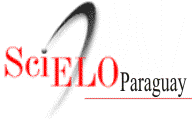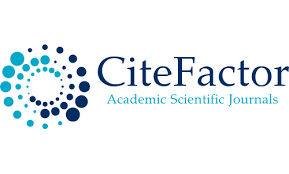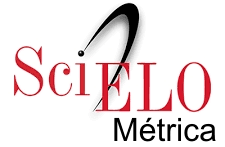Potencial transmisión congénita de la enfermedad de Chagas en la segunda generación de jóvenes embarazadas que asistieron a su control prenatal en el departamento de Cordillera, Paraguay
DOI:
https://doi.org/10.18004/mem.iics/1812-9528/2024.e22122404%20Palabras clave:
Enfermedad de Chagas, transmisión vertical, Chagas congénito, mujeres embarazadas, segunda generaciónResumen
Trypanosoma cruzi es el agente causal de la enfermedad de Chagas. En Paraguay se estima que existen 165.000 personas infectadas y actualmente la principal vía de transmisión es la congénita, con una prevalencia del 5% y con alrededor de 400 niños infectados nacidos por año. El departamento de Cordillera es área endémica de la Región Oriental del país, donde se implementó el Programa de Control Prenatal de Chagas en el año 1995. El objetivo de este estudio fue inferir sobre la potencial transmisión congénita de la enfermedad de Chagas en jóvenes embarazadas de segunda generación de Cordillera que asistieron a su control prenatal en el período 2010-2012, 15 años después de la implementación del Programa de Control Prenatal. De 9.588 embarazadas; 482 fueron seropositivas (5%); 2,74% en el grupo de 12 a 19 años, 4,93% de 20 a 30 años, 8,03% de 31 a 40 años y 16,11% de 41 a 48 años. Para estimar el origen de la transmisión congénita de segunda generación se tuvo en cuenta a las 72 seropositivas de 12 a 19 años y según la base de datos de las respectivas madres 61 eran seropositivas. Con esta información se estima que la transmisión a embarazadas de segunda generación de 12 a 19 años fue congénita en un 85% indicando una transmisión congénita muy significativa en la población de estudio. Esta información ayudaría al Programa Nacional de Chagas en el fortalecimiento del control de la transmisión congénita de la enfermedad de Chagas en el país.
Descargas
Citas
World Health Organization. Chagas disease in Latin America: an epidemiological update based on 2010 estimates. Wkly Epidemiol Rec [Internet]. 2015 [cited 2023 Jul 28]; 90(6): 33-43. https://reliefweb.int/report/world/weekly-epidemiological-record-wer-6-february-2015-vol-90-no-6-pp-33-44-enfr
Meza Acosta G, Cerecceto Meyer H. Seroprevalencia de la enfermedad de Chagas en embarazadas del departamento de Cordillera en el período 2010-2016 y el comportamiento de la seroprevalencia después de 21 años de la implementación del Programa de control Prenatal de Chagas. Mem. Inst. Investg. Cienc. Salud [Internet]. 2019 [citado 20 Ago 2023]; 17(3): 10-19. http://scielo.iics.una.py/scielo.php?script=sci_arttext&pid=S1812-95282019000300010&lng=en&nrm=iso&tlng=es php?script=sci_arttext&pid=S1812-95282019000300010&lng=en&nrm=iso&tlng=es https://doi.org/10.18004/mem.iics/1812-9528/2019.017.03.10-019
Organización Panamericana de la Salud. Guía para el diagnóstico y el tratamiento de la enfermedad de Chagas. Washington, D.C.: OPS; 2018
Organización Panamericana de la Salud. La enfermedad de Chagas en las Américas: análisis de la situación actual y revisión estratégica de la agenda regional. Informe final, 14-16 de marzo del 2023, Medellín (Colombia) [Internet]. Medellín: Organización Panamericana de la Salud, Organización Mundial de la Salud; 2023. [citado 20 Ago 2023]. https://www.paho.org/es/documentos/enfermedad-chagas-americas-analisis-situacion-actual-revision-estrategica-agenda
Ministerio de Salud Pública y Bienestar Social. Guía de manejo de pacientes adultos con enfermedad de Chagas [Internet]. Ministerio de Salud Pública y Bienestar Social; 2021. [citado 20 Set 2023]. https://senepa.gov.py/wp-content/uploads/2021/07/ISG0001-PROTOCOLOS-adulto-1.pdf
Russomando G, Almiron M, Candia N, Franco L, Sánchez Z, de Guillen I. Implementación y evaluación de un sistema localmente sustentable de diagnóstico prenatal que permite detectar casos de transmisión congénita de la enfermedad de Chagas en zonas endémicas del Paraguay. Rev Soc Bras Med Trop. 2005; 38(Supl.2):49-54
Sánchez Z, Guillén L, Pineda D, Paredes B, V de Feltes C, Russomando G. Técnicas moleculares integradas a la vigilancia entomológica de vectores de la enfermedad de Chagas: Estudio del vector secundario Triatoma sordida en la Región Oriental del Paraguay. Mem. Inst. Investig. Cienc. Salud [Internet]. 2020 [citado 25 Set 2023]; 18(1): 76-83. http://scielo.iics.una.py/scielo.php?script=sci_arttext&pid=S1812-95282020000100076 php?script=sci_arttext&pid=S1812-95282020000100076 https://doi.org/10.18004/mem.iics/1812-9528/2020.018.01.76-083
Moncayo A, Silveira AC. Current epidemiological trends for Chagas disease in Latin America and future challenges inepidemiology, surveillance and health policy. Mem Inst Oswaldo Cruz. 2009 Jul: 104 Suppl 1: 17-30. https://pubmed.ncbi.nlm.nih.gov/19753454/
Ministerio de Salud Pública y Bienestar Social (MSP y BS). Servicio Nacional de Erradicación de Paludismo (SENEPA). Chagas. Ministerio de Salud Pública y Bienestar Social. https://www.mspbs.gov.py/senepa/chagas.html
Jannin J, Salvatella R. Estimación cuantitativa de la enfermedad de Chagas en las Américas. Montevideo: Organización Panamericana de la Salud; 2006
Russomando G. Transmisión congénita de la enfermedad de Chagas en el Paraguay. Mem. Inst. Investig. Cienc. Salud. 2009; 7(2):55-64
Paraguay. Ministerio de Salud Pública y Bienestar Social (MSP y BS). Dirección General del Servicio Nacional de Erradicación de Paludismo. Resolución S.G. N° 261/2023 por la cual se aprueba y declara de interés institucional la “Guía práctica para manejo de transmisión congénita de Chagas y Chagas crónico reciente infantil [Internet]. Asunción: MSP y BS; 2023. [citado 20 Sept 2023]. https://www.mspbs.gov.py/portal/27543/lanzan-primera-guia-de-manejo-del-chagas-congenito-y-cronico-reciente-infantil.html
Carlier Y, Torrico F. Congenital infection with Trypanosoma cruzi: from mechanisms of transmission to strategies for diagnosis and control. Rev Soc Bras Med Trop. 2003; 36(6):767-71
Ministerio de Salud Pública y Bienestar Social. Dirección General del Servicio Nacional de Erradicación de Paludismo. Paraguay refuerza la lucha contra la Enfermedad de Chagas con las primeras guías de manejo de la patología. [Internet]. 2021 https://senepa.gov.py/2021/07/09/paraguay-refuerza-la-lucha-contra-la-enfermedad-de-chagas-con-las-primeras-guias-de-manejo-de-la-patologia/
Meza G. Seroprevalencia de la enfermedad de Chagas en embarazadas del departamento de Cordillera antes y después de la implementación del control prenatal de Chagas en los periodos 1997 y 2011. Mem. Inst. Investig. Cienc. Salud [Internet]. 2016 [citado 20 Sept. 2023]; 14(3): 73-80. http://scielo.iics.una.py/scielo.php?script=sci_arttext&pid=S1812-95282016000300073 php?script=sci_arttext&pid=S1812-95282016000300073 https://doi.org/10.18004/mem.iics/1812-9528/2016.014(03)73-080
Zaidenberg M. La enfermedad de Chagas congénita en la Provincia de Salta, Argentina, años 1980-1997. Rev. Soc. Bras. Med. Trop.1999; 32(6):689-95
Carlier Y, Altcheh J, Angheben A, Freilij H, Luquetti AO, Schijman AG, et al. Congenital Chagas disease: Updated recommendations for prevention, diagnosis, treatment, and follow-up of newborns and siblings, girls, women of childbearing age, and pregnant women. PLoS Negl Trop Dis [Internet]. 2019 [cited 2023 Ago 20]; 13(10): e0007694. https://www.ncbi.nlm.nih.gov/pmc/articles/PMC6812740 . https://doi.org/10.1371/journal.pntd.0007694
Paraguay. Ministerio de Salud Pública y Bienestar Socia (MSP y BS). Servicio Nacional de Erradicación del Paludismol (SENEPA). Guía práctica para manejo de transmisión congénita de Chagas y Chagas crónico reciente infantil [Internet]. Asunción: MSP y BS, SENEPA; 2021. [citado 20 Ago 2023]; [citado 20 Ago 2023]; https://senepa.gov.py/wp-content/uploads/2021/07/ISG0001-PROTOCOLOS-infantil.pdf
Silveira AC, Rojas de Arias A, Segura E, Guillén G, Russomando G, Schenone H, et al. El control de la enfermedad de Chagas en los países del Cono Sur de América. Historia de una iniciativa internacional. 1991/2001. Uberaba: Faculdade de Medicina do Triângulo Mineiro; 2002.
Schenone H, Iglesias J, Schenone S, Contreras M.C. Infección chagásica congénita de segunda generación. Biol. Chil. Parasitol., 1987, 42: 71-73. [ Links ]
Schenone H, Gaggero M, Sapunar J, Contreras M.C, Rojas A. Congenital Chagas disease of second generation in Santiago, Chile. Report of two cases. Rev. Inst. Med. Trop. S. Paulo, 2001; 43 (4): 231-232.
Amorín B, Peréz L. Chagas congénito de segunda generación en Uruguay. Primer caso sintomático descrito en el país. Arch Pediatr Urug 2016; 87 (3): 245-252.
Piat GL, Almirón JF, Romano JR, Romano M. Chagas Congénito. Revisión de una enfermedad curable y subestimada. Revista de Posgrado de la VIa Cátedra de Medicina Junio 2009, N°193. Corrientes - Argentina.














